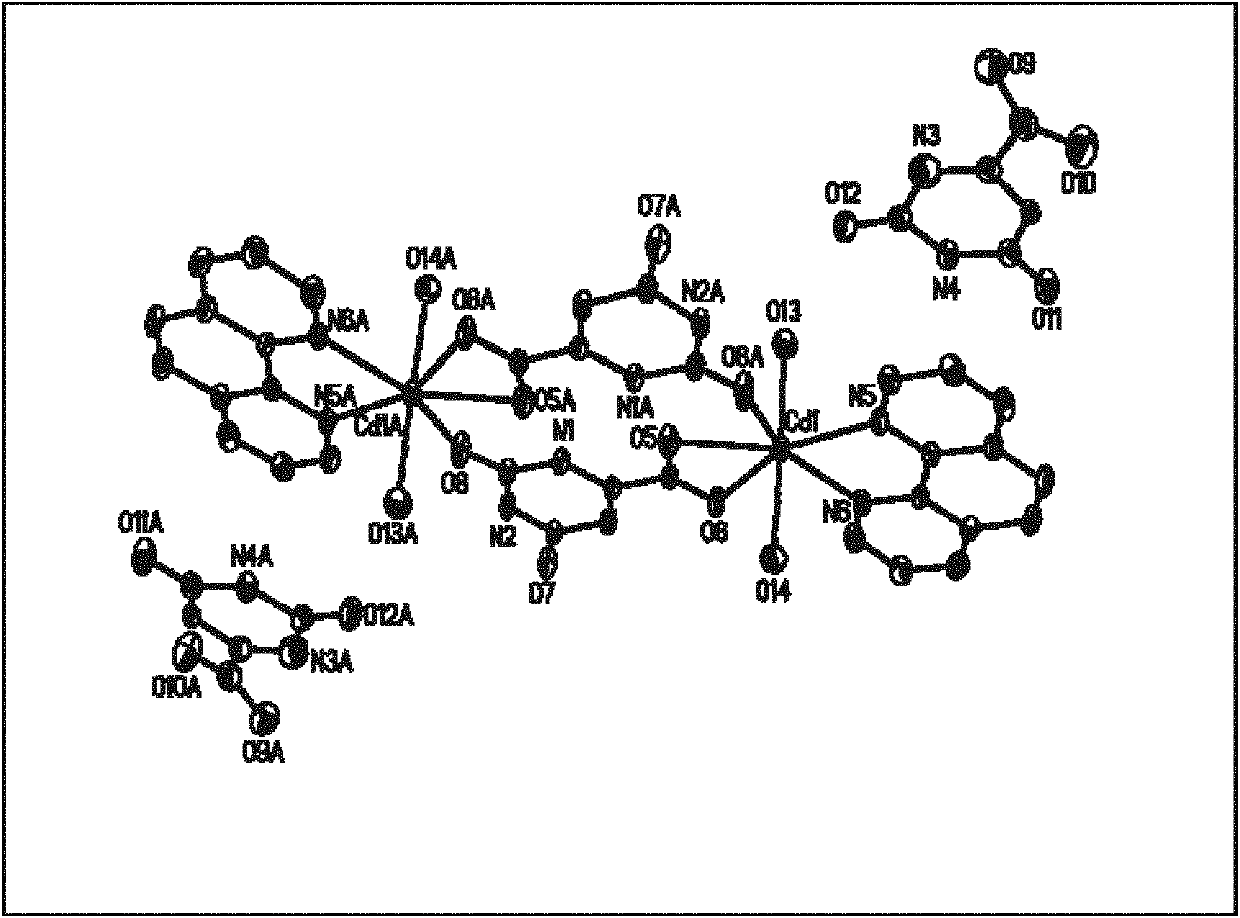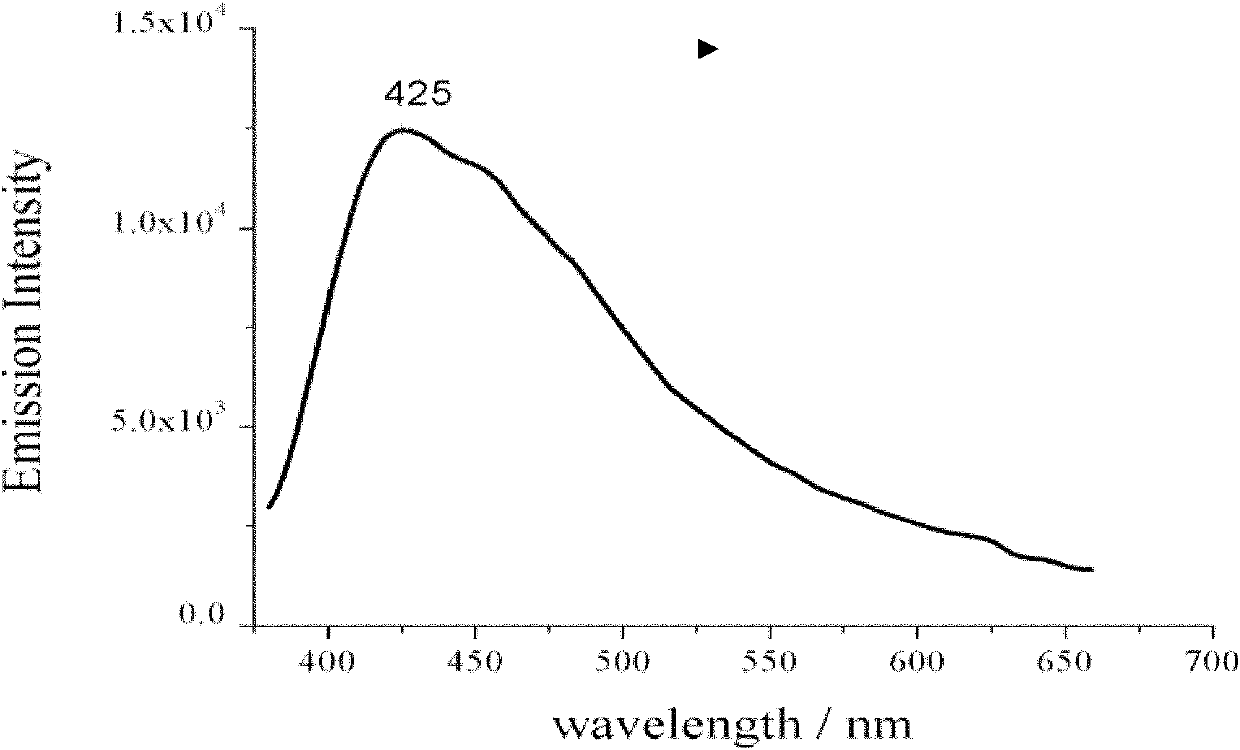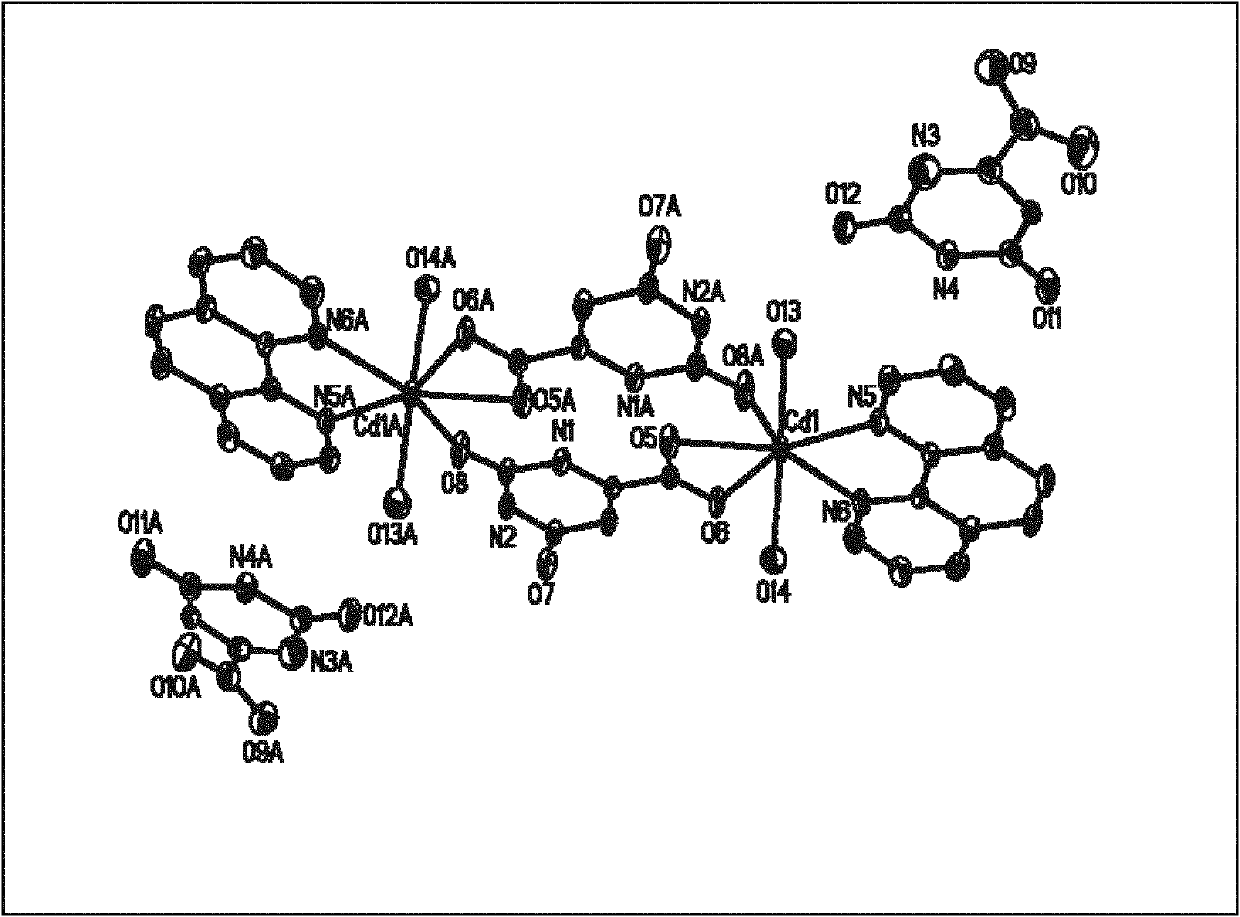Blue-light-emitting fluorescent material and preparation method thereof
A technology of fluorescent materials and luminescent properties, applied in the field of fluorescent materials, can solve the problems of weak absorption, unfavorable environmental protection and health, poor stability of aluminate phosphors, etc., and achieves good film-forming properties, good blue light emission properties, The effect of good photoelectric activity
- Summary
- Abstract
- Description
- Claims
- Application Information
AI Technical Summary
Problems solved by technology
Method used
Image
Examples
Embodiment 1
[0018] Add orotic acid (0.5mmol, 0.85g) in 50mL beaker, cadmium sulfate (0.6mmol, 0.462g), o-phenanthroline (0.2mmol, 0.04g), add 10mL ethanol and 20mL water, stir at room temperature Add triethylamine dropwise, adjust the pH value to 5, and leave it at room temperature for 12 hours to obtain colorless blocky crystals.
Embodiment 2
[0020] Add orotic acid (0.6mmol, 1.02g) in 50mL beaker, cadmium sulfate (0.7mmol, 0.539g), o-phenanthroline (0.3mmol, 0.06g), add 10mL ethanol and 20mL water, stir at room temperature Add triethylamine dropwise, adjust the pH value to 6, and leave it at room temperature for 24h to obtain colorless blocky crystals.
Embodiment 3
[0022] In the 50mL beaker, add orotic acid (0.7mmol, 119g), cadmium sulfate (0.8mmol, 0.616g), o-phenanthroline (0.4mmol, 0.08g), add 10mL ethanol and 20mL water, under the condition of stirring at room temperature , adding triethylamine dropwise, adjusting the pH value to 7, and standing at room temperature for 48h to obtain colorless blocky crystals.
[0023] The colorless massive crystal obtained in the above-mentioned examples is rinsed with distilled water, and air-dried naturally; After determination, the molecular formula of this cadmium orotic acid compound is C 88 h 64 N 8 o 12 Cd 2 . The crystal system is triclinic, the space group is P-1, and the unit cell parameters α=73.082°, γ=78.073°, β=81.100°, the cadmium ion is a pentagonal bipyramidal coordination mode, two nitrogen coordination atoms are from o-phenanthroline, and three oxygen coordination atoms are from orotic acid, The two oxygen coordinating atoms come from water. Its crystal structure is s...
PUM
 Login to View More
Login to View More Abstract
Description
Claims
Application Information
 Login to View More
Login to View More - R&D
- Intellectual Property
- Life Sciences
- Materials
- Tech Scout
- Unparalleled Data Quality
- Higher Quality Content
- 60% Fewer Hallucinations
Browse by: Latest US Patents, China's latest patents, Technical Efficacy Thesaurus, Application Domain, Technology Topic, Popular Technical Reports.
© 2025 PatSnap. All rights reserved.Legal|Privacy policy|Modern Slavery Act Transparency Statement|Sitemap|About US| Contact US: help@patsnap.com



